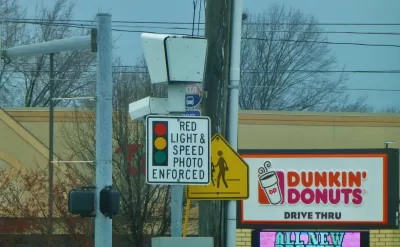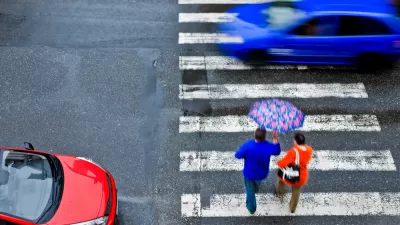A new study shows what happens when cities remove red light cameras, which have become targeted by many motorists and eliminated by at least 158 cities. Fatal crashes increased 30 percent compared with area cities that kept the controversial cameras.

Do traffic crashes, including those that cause deaths, increase after a city pulls their red-light cameras due to motorists' complaints? Yes, according to a new study released by the insurance industry. It is also the first study to analyze what happens after red light cameras are removed.
"The Insurance Institute for Highway Safety looked at 14 cities that ended their red-light camera programs between 2010 and 2014," reports Phil LeBeau, CNBC auto reporter. "Researchers compared the annual crash rates in those cities with those of 29 others in the same regions that continued using red-light cameras."
In those cities that turned off their cameras, the rate of fatal crashes involving a driver who sped through a red light was 30 percent higher per capita than if the cameras had remained functional, according to the research.
Most of those killed by red-light-running vehicles are not the drivers, but passengers, pedestrians and bicyclists, the IIHS said.
The study indicates that 158 communities have stopped using red-light cameras in the last five years, reports Joan Lowy for the Associated Press.
"Debates over automated enforcement often center on the hassle of getting a ticket and paying a fine," IIHS President Adrian Lund said.. "It's important to remember that there are hundreds of people walking around who wouldn't be here if not for red-light cameras.
"Red light camera programs in 79 large U.S. cities saved nearly 1,300 lives through 2014," according to the IIHS press release.
The study can be accessed from the on-line abstract.
FULL STORY: They may be annoying, but red-light cameras save lives: IIHS

Alabama: Trump Terminates Settlements for Black Communities Harmed By Raw Sewage
Trump deemed the landmark civil rights agreement “illegal DEI and environmental justice policy.”

Study: Maui’s Plan to Convert Vacation Rentals to Long-Term Housing Could Cause Nearly $1 Billion Economic Loss
The plan would reduce visitor accommodation by 25% resulting in 1,900 jobs lost.

Why Should We Subsidize Public Transportation?
Many public transit agencies face financial stress due to rising costs, declining fare revenue, and declining subsidies. Transit advocates must provide a strong business case for increasing public transit funding.

Paris Bike Boom Leads to Steep Drop in Air Pollution
The French city’s air quality has improved dramatically in the past 20 years, coinciding with a growth in cycling.

Why Housing Costs More to Build in California Than in Texas
Hard costs like labor and materials combined with ‘soft’ costs such as permitting make building in the San Francisco Bay Area almost three times as costly as in Texas cities.

San Diego County Sees a Rise in Urban Coyotes
San Diego County experiences a rise in urban coyotes, as sightings become prevalent throughout its urban neighbourhoods and surrounding areas.
Urban Design for Planners 1: Software Tools
This six-course series explores essential urban design concepts using open source software and equips planners with the tools they need to participate fully in the urban design process.
Planning for Universal Design
Learn the tools for implementing Universal Design in planning regulations.
Smith Gee Studio
Alamo Area Metropolitan Planning Organization
City of Santa Clarita
Institute for Housing and Urban Development Studies (IHS)
City of Grandview
Harvard GSD Executive Education
Toledo-Lucas County Plan Commissions
Salt Lake City
NYU Wagner Graduate School of Public Service




























